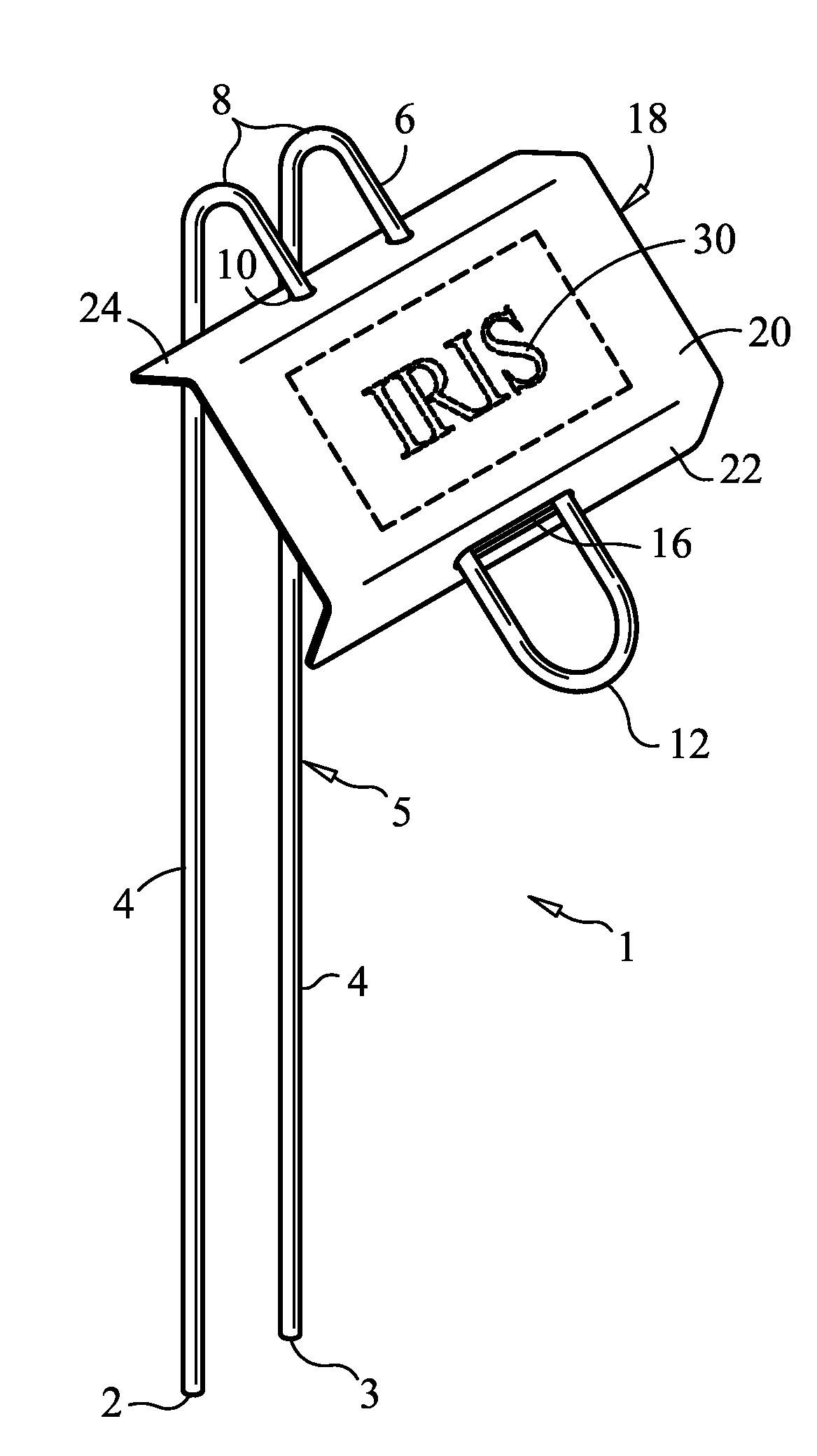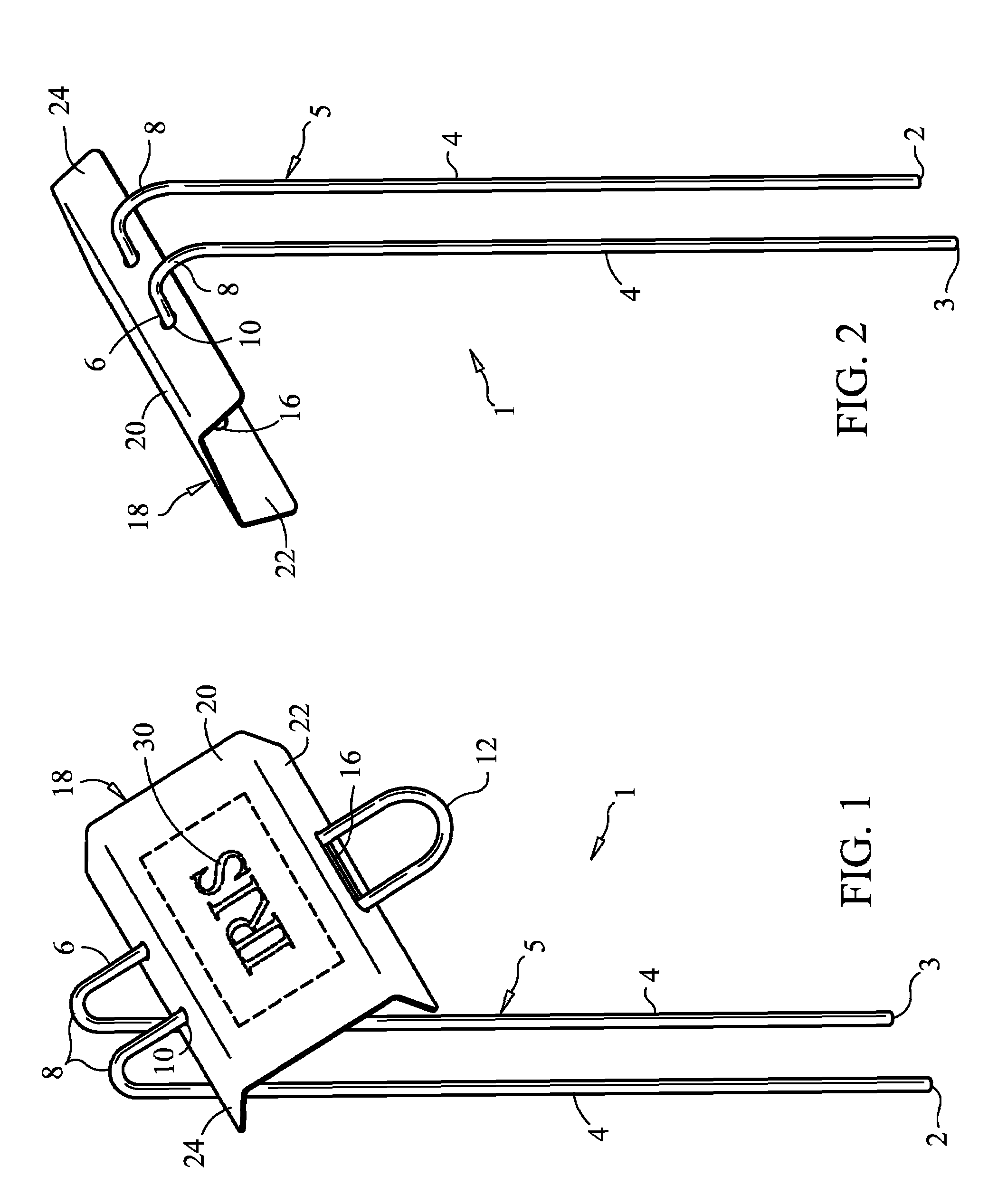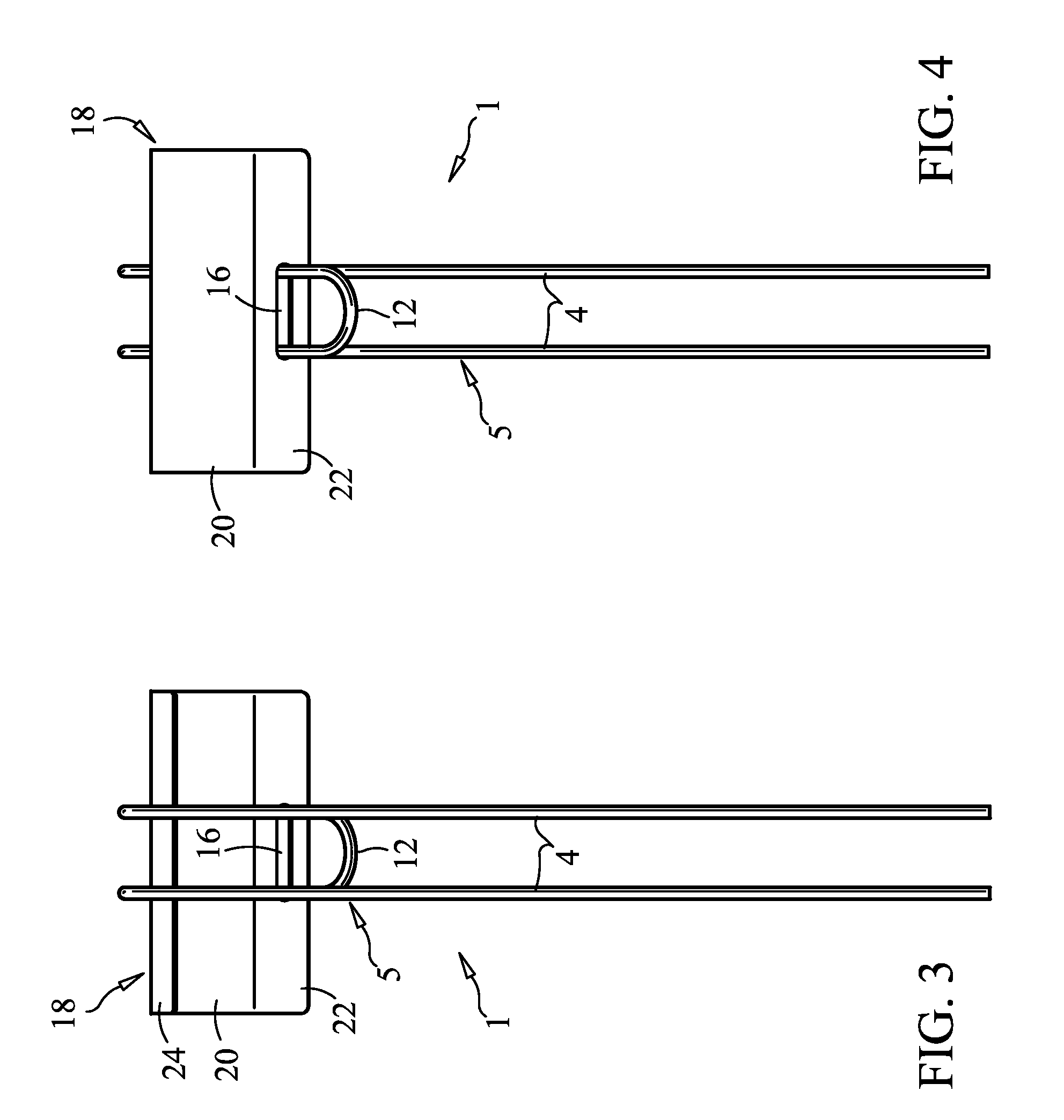Plant marker
a plant marker and marker technology, applied in the field of markers, can solve the problems of inability to adapt to the use of different species of plants, inconvenient cleaning, if not difficult, etc., and achieve the effect of not being able to easily remove the two parts in a sudden manner
- Summary
- Abstract
- Description
- Claims
- Application Information
AI Technical Summary
Benefits of technology
Problems solved by technology
Method used
Image
Examples
Embodiment Construction
[0021]A preferred embodiment of the plant marker of the present invention is best illustrated in FIGS. 1 and 9. Such an embodiment of the marker 1 is comprised of three assembled elements: a ground stake 5, a display plate 18 and identifying indicia 30.
[0022]The stake 5 is a wire rod constructed of a rust resistant material such as aluminum, stainless steel, zinc or molded hard plastic. Midway between the wire's two ends 2, 3 is a semicircular bend 12 which separates the stake wire into two legs. Along the legs, approximately one-third of the distance from the aforementioned bend 12 to the respective leg ends 2, 3, are a pair of symmetrical bends 8. These bends 8 effectively subdivide the stake 5 into a plate mounting portion 6 and a ground anchoring portion 4. Preferably, the distal bends 8 put the mounting portion 6 and anchoring portion 4 in approximately 45-degree relation to each other. This angled configuration allows persons to view the display from a horizontal distance whil...
PUM
 Login to View More
Login to View More Abstract
Description
Claims
Application Information
 Login to View More
Login to View More - R&D
- Intellectual Property
- Life Sciences
- Materials
- Tech Scout
- Unparalleled Data Quality
- Higher Quality Content
- 60% Fewer Hallucinations
Browse by: Latest US Patents, China's latest patents, Technical Efficacy Thesaurus, Application Domain, Technology Topic, Popular Technical Reports.
© 2025 PatSnap. All rights reserved.Legal|Privacy policy|Modern Slavery Act Transparency Statement|Sitemap|About US| Contact US: help@patsnap.com



